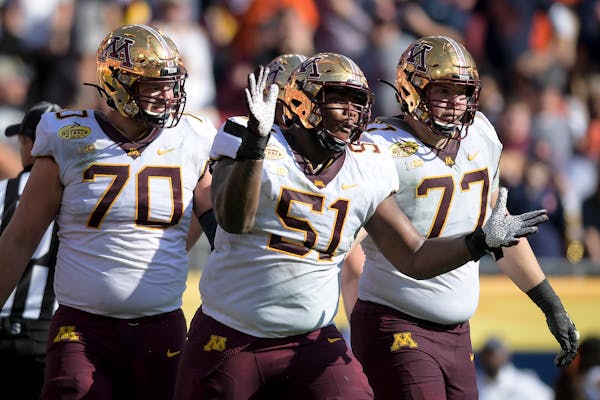There's a myth about it taking 21 days to form a habit.
There might be new lore about 21 days soon, thanks to the Big Ten.
The conference mandated a 21-day sit-out period for any athlete who tests positive for COVID-19. It was one of several stringent safety protocols, along with daily testing, put in place for the reinstated season after its initial cancellation.
But with a recent outbreak pausing workouts and canning Wisconsin's game at Nebraska this Saturday — plus Badgers quarterback Graham Mertz reportedly set to miss those 21 days — many have questioned the lengthy policy, both what it means and if it's necessary.
Those three weeks roughly encompass three different stages: About 10 days for recovery and isolation to prevent disease spread, thorough cardiac screening to look for myocarditis after two weeks and about a week to re-acclimate physically to the team.
The myocarditis concern was reportedly a major reason why the Big Ten first canceled its season back in August. The swelling of the heart found in some patients after having coronavirus worried conference leaders when it came to the long-term effects for young athletes. There's been conflicting medical opinions on the issue since, with some doctors arguing it's not an issue while others believe the pool of research just isn't vast enough to know for sure.
A recent Journal of the American Medical Association report found so little evidence of myocarditis in COVID-positive college athletes, who were mostly mildly symptomatic to asymptomatic, that it didn't recommend full-scale cardiac testing anymore.
Other Power Five conferences only necessitate a CDC-recommended 10-day sit-out. Some Big Ten athletes and coaches have criticized the Big Ten's rule, including Wisconsin athletic director Barry Alvarez. He told Sports Illustrated the conference should "reevaluate" the policy that never fully sounded right to him in the first place.
Gophers coach P.J. Fleck, though, echoed what many around the conference have also said about deferring to the experts.
"I don't know anything about being a doctor," Fleck said, adding he knows the rule's intention is athlete safety. "… If 21 days is what they feel with — one, the COVID, and two, the heart condition — then I'm all for it. That's what makes 2020 so unpredictable. That's what makes it really difficult. That's what makes it challenging in a lot of different ways."
Missing 21 days amounts to three games, which is near a lifetime in a nine-game season. And it could be particularly damaging to a team's season should it affect a key position, such as quarterback.
Gophers quarterback Tanner Morgan said the QBs always spread out six feet during meetings and wear masks. During the limited free time between football and school, Morgan said players try to act responsibly and keep each other accountable, knowing something as simple as seeing a significant other or getting takeout food could expose them.
Offensive coordinator Mike Sanford said the Gophers have had their own COVID-19 personnel issues, and are most cautious with the quarterbacks, going as far as altering their living situations, since that's a hard position to replace.
But if anything, knowing there's a chance to miss multiple games in an already delayed and shortened season has made the Gophers appreciate each outing more.
"We're taking it seriously because 21 days is a long time," Morgan said. "And that's something that we really can't afford."
Megan Ryan covers the Gophers and college football for the Star Tribune. Twitter: @theothermegryan. E-mail: megan.ryan@startribune.com
NFL to open academy in Australia to identify and develop young prospects

Duran, Correa hope to return during Twins' upcoming road trip

Vikings mock draft: seven rounds, eight picks and, yes, one quarterback


